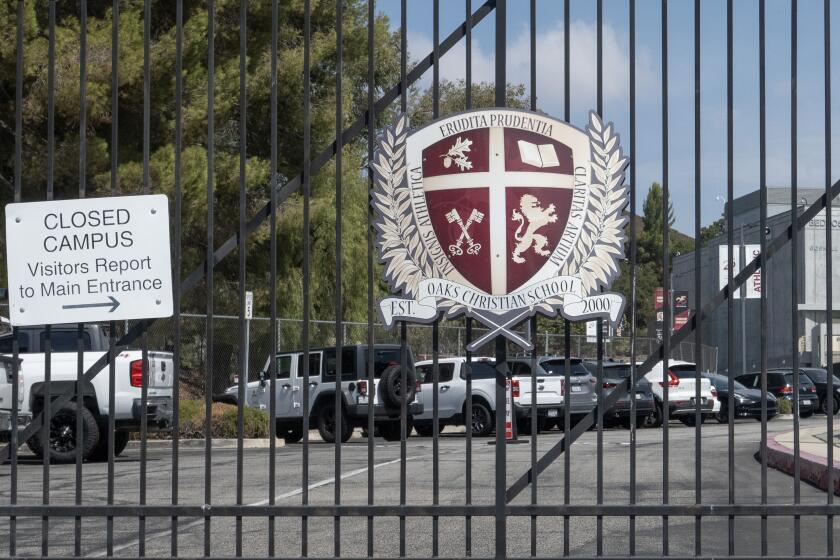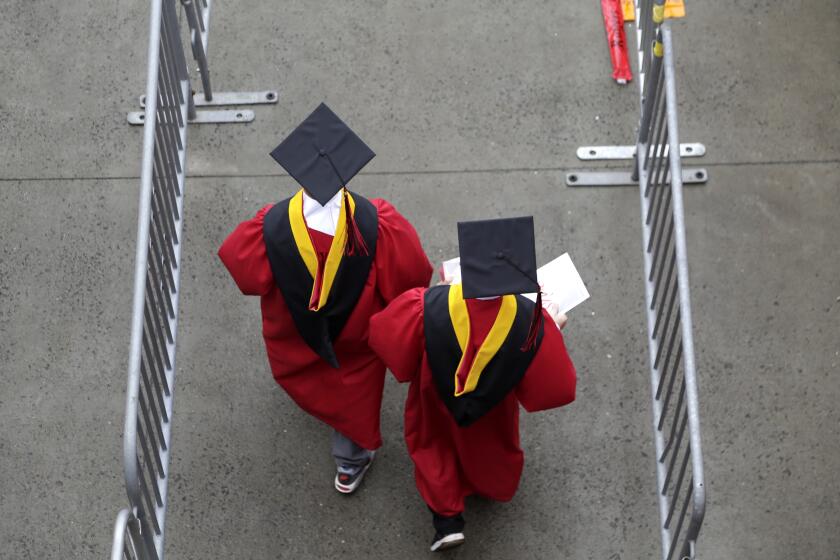PERSPECTIVE ON CAL STATE : Don’t Admit Students Who Aren’t Ready : Arbitrarily cutting remedial programs will hurt blacks who were encouraged to enroll even if unprepared.
I can vividly remember sweating out the Scholastic Aptitude Test. I knew that with my grade point average, I needed at least a 900 on the SAT to get into San Jose State University. That was in 1980. Today, as I help my own students prepare for this important test, I feel a sort of dizzying anger when I see that I would now need only an SAT score of 630 to get in. More important, I realize today’s high school students need not work quite as hard as I did to achieve the same goal. They know it, too. Why then, is the California State University board of trustees shocked when the students they accept are not ready?
In teachers’ lunchrooms across the state, we’re wondering why the Cal State system has chosen to eliminate remedial classes for students not fully prepared for college work.
While it seems that the get-tough policy stems from a desire to raise standards and save money, the reality is that they have consistently sent a message that mediocrity is acceptable--and my students received that message loud and clear. And, while we acknowledge that there are breakdowns in our secondary-school system--inflated grades, parental pressure to pass kids who are not capable and student apathy--the bottom line is that the state university welcomed these students and their money with open arms.
Now, when the Cal State image is threatened, they decide to cut these kids loose. And, because they have chosen not to phase out remedial programs for foreign-born students, an even more disturbing question emerges: Are the trustees targeting African Americans who depend on these developmental courses? Why the distinc tion? Is it just a coincidence that the need to trim these programs comes when federal money for disadvantaged youth seems to be drying up?
Where, then, does the responsibility for educating these young people lie?
As a high school English teacher, I am troubled by trustee William Hauck’s comment that “we’ve got to ask more of the K-12 system.” It would seem that in a system that does not have the luxury of choosing who sits in its desks, we are accomplishing a great deal. We are asked to intrude ourselves into our students’ lives in ways that were unimaginable 20 years ago. Our schools have become more than places of learning. They have become havens for students with little or no parenting at home; they have become language centers for new citizens; they have become the sole source of health care for many young people--all in the face of tremendous budget reductions.
So, how much more can anyone ask of the K-12 system?
A more practical solution to the state university’s dilemma would be to examine its own admission practices.
If the trustees are truly concerned with the escalating costs of remedial programs, why have they lowered their entrance requirements across the board? If the trustees are truly concerned with protecting a scholarly environment, wouldn’t they be raising standards? They must accept that they have an obligation to educate a population they once wooed. They have instead decided to target a group who can no longer contribute financially to the pot, and that is tragic.
The California State Universities enjoy a luxury we do not: They can accept or reject students at will. Unfortunately, they have chosen, for the moment, to accept only students who can do something for them in return.
More to Read
Sign up for Essential California
The most important California stories and recommendations in your inbox every morning.
You may occasionally receive promotional content from the Los Angeles Times.










